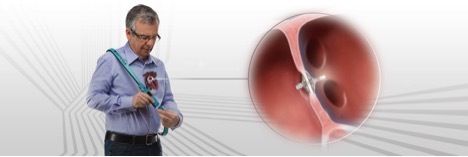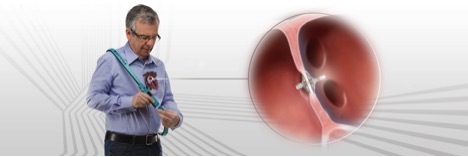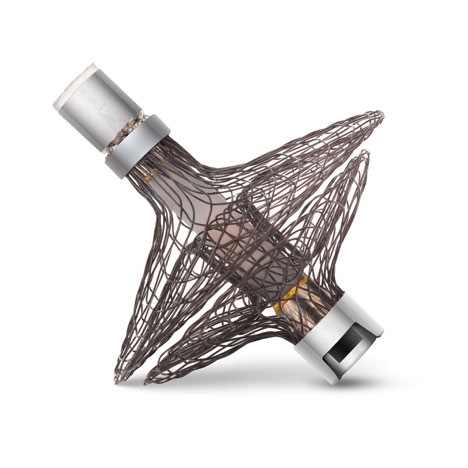TEL AVIV, Israel--(BUSINESS WIRE)--A review appearing in the July 18 issue of the Journal of the American College of Cardiology (JACC) discusses current and next-generation implantable hemodynamic monitors and how new approaches focused on the direct measurement of left atrial pressure (LAP), seek to expand the use of pressure-guided congestive heart failure (CHF) management.1
The report highlights Vectorious Medical Technologies, an Israeli company developing the world’s first digital wireless sensory implant for measuring LAP (currently available CardioMEMS technology is analog and measures pressure in the pulmonary artery or PAP). Patients with CHF suffer from repeated admissions to the hospital due to fluid overload, typically presenting with edema of the legs and congestion of the lungs. The conventional approach of monitoring symptoms and measuring daily weights, and a “wait and see” attitude, is the basis for the huge unmet need of recurrent hospital admissions, because these methods appear late and are unreliable signs of disease progression. This is also the main driver of the huge cost of this chronic medical condition, more than $30 billion a year, in the United States alone, according to background contained in the review.
“Intracardiac and PAP-guided management has become a focus of hospitalization reduction in CHF,” write Drs. William T. Abraham and Leor Perl. Dr. Abraham is from the Departments of Medicine, Physiology, and Cell Biology, Division of Cardiovascular Medicine, and the Davis Heart & Lung Research Institute, The Ohio State University, Columbus, Ohio. LAP, rather than PAP, is a direct reflection of left ventricular filling pressure—which is the primary pressure target for CHF management. Therefore, its direct measurement may provide more clinical information than PAP, according to the authors. Dr. Perl is in the Cardiology Department, Rabin Medical Center, Petah Tikva, Israel; on the Sackler Faculty of Medicine, Tel Aviv University; and in the Division of Cardiovascular Medicine, Stanford University Medical Center, Stanford, California.
“The Vectorious V-LAP measures the heart’s LAP which is the earliest and most specific indication for a CHF patient’s exacerbation,” according to Oren Goldstein, Vectorious’ founder and CEO. “The system is the most robust wireless implantable platform to date, and can enable optimal treatment for patients. It provides a high-resolution waveform morphology of LAP, allowing for the detection of additional cardiac comorbidities such as atrial fibrillation and mitral valve regurgitation.”
In the JACC review, Drs. Abraham and Perl say that CHF outcomes with CardioMEMS PAP technology have been encouraging. They write that, additional, more technologically-advanced, implantable hemodynamic monitoring systems are in development, and newer approaches to the use of this data (such as a physician-directed, patient self-management approach) may yet again revolutionize the management of patients with HF.
“As a clinician and a potential patient in the future—as we all are—we are facing exciting times,” Dr. Perl says. “Many chronic conditions like CHF, that once necessitated admission to the hospital, could be treated at home. Because information on the advancement of the disease precedes conventional symptoms by days and even weeks, patients could have more control over their condition and be able to avoid unnecessary hospital admissions.”
Both Drs. Abraham and Perl have received consulting fees from Vectorious. Dr. Perl is also the Medical Director.
BACKGROUND
Vectorious Medical Technologies Ltd. is a privately-held company, founded in 2011 and is headquartered in Tel Aviv, Israel. The Company established its US headquarters at the Cleveland Clinic’s Global Cardiovascular Innovation Center, located in Cleveland, Ohio. With goal of saving millions of lives by enabling optimal treatment of CHF patients, Vectorious has developed the first digital, leadless, battery-free sensory implant providing daily “push-button” readings of LAP, a platform that will enable a significant improvement in the management of CHF. The system implements a novel approach to long-term, implant-based hemodynamic monitoring that leverages state-of-the-art technologies in the areas of miniature sensing and wireless communications.
Market acceptance of the implantable hemodynamic monitoring approach to CHF management has been paved by the FDA approval in May 2014 for the commercial use of the CardioMEMS wireless implant device for monitoring HF patients. The Company believes, however, that Vectorious’ differentiated monitoring approach, which is based on the measurement of LAP, provides an earlier and more specific cardiac indication than does the CardioMEMS device, which measures PAP.
1. Abraham WT, Perl L. Implantable hemodynamic monitoring for heart failure patients. J Am Coll Cardiol. 2017;70:389-398.





